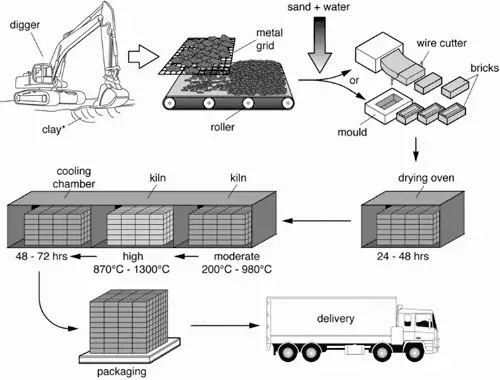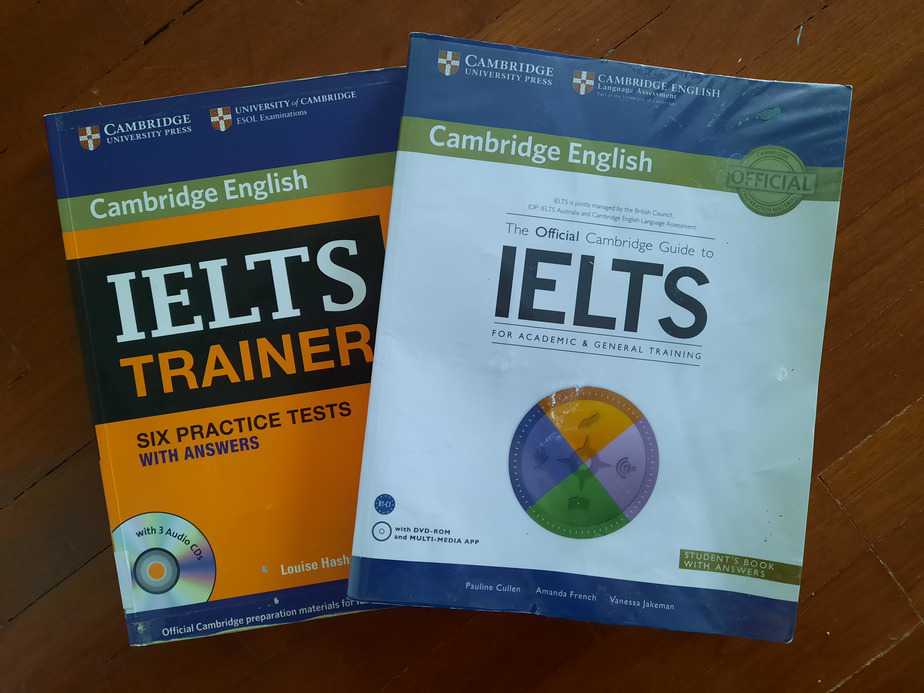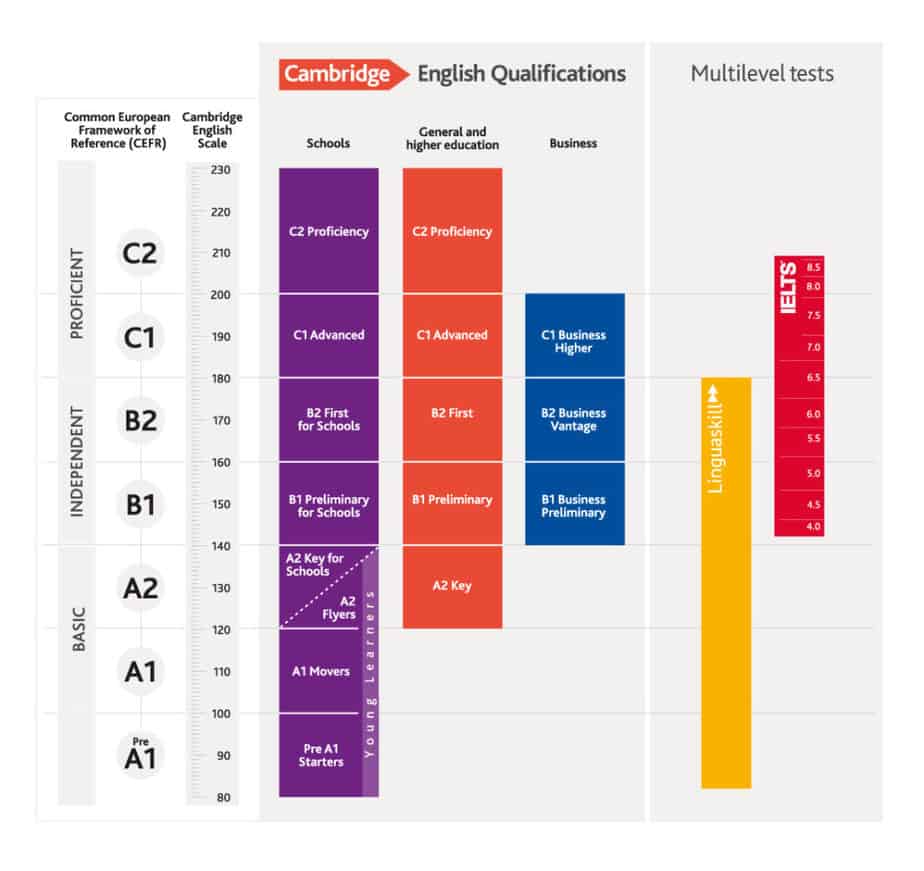IELTS, one of the world’s leading ‘high stakes’ English language exams, with over 3.6 million test-takers per year, is not easy. According to our recent survey half of tall IELTS test-takers need to retake it at least once with a poor performance in the writing test often being to blame.
To teach IELTS writing effectively you need to model correct answers, deconstruct them into their various paragraph layouts, sentence types and grammatical constructions. Jointly construct essays and allow students to attempt questions independently before introducing time pressure.
Of course, you will then need to provide timely feedback on their writing giving specific advice in accordance with the IELTS writing band descriptors using them to show what students need to do in order to improve their band score.
You also need to provide an array of question types so that students can gain ample practice with them so they won’t be caught out by not having practiced a certain question type on test day.
During my nearly two decades coaching IELTS writing I have developed a set procedure that I teach students to go through for each part of the writing task.
I am going to go through these with you and explain how I push students into getting higher band scores. We are going to cover each part of the test, in turn, the General and Academic versions, Task 1 and Task 2. Let’s start with IELTS General Task 1. By the way, you might also be interested in reading about how to become an IELTS examiner, here.
How To Teach IELTS General Writing Task 1
As I am sure you know the IELTS writing exam is one hour long. Students have two tasks to complete in this time and it is recommended that they spend twenty minutes on this first task and forty minutes on the second task. The first task in the General IELTS test is a letter-writing task.
Here is the procedure that I teach students:
- Analyze the question and plan your answer (4 mins)
- Write paragraph 1 – the salutation and the purpose of the letter (1 min)
- Write paragraph 2 – cover bullet point 1 (4 mins)
- Write paragraph 3 – cover bullet point 2 (4 mins)
- Write paragraph 4 – cover bullet point 3 including signing off (4 mins)
- Checking – 3 mins
I get students to follow this every time as it gives them a solid structure to follow and prevents them from panicking on test day as regardless of how tough the question looks they will always know what they are going to do.
There are also six types of letters that students need to have sufficient confidence and language to deal with. They are:
- Requesting information
- Providing personal or factual information
- Explaining a problem or situation
- Making a request
- Making a complaint
- Making a suggestion or recommending something
You can hear me explain all of this in great detail in my video here:
IELTS Lesson Plan Ideas and Advice
Starters: I will often introduce a situation that either I have personally encountered and tell a story related to it. For example, I might explain how my next-door neighbors at university played music all night and prevented us from sleeping.
I might even dig out of a few old photos if I can find something, or indeed introduce any props or realia related to the situation. We will then see if any of the students encountered any similar problems.
Alternatively, I might play a short video clip presenting a situation, for example, it might be a clip of bad service at a restaurant, or a news clip outlining a problem, for example, a clip about the government planning to chop down some trees in order to build a train line.
Local news works well for this. Once more I would see if they are familiar with these specific issues or if they experience any similar ones.
Main activities: After I have introduced a situation in this way I reveal the writing task they are going to complete, which for example, might be:
| You should spend about 20 minutes on this task. You live in a room in college which you share with another student. However, there are many problems with this arrangement and you find it very difficult to work. Write a letter to the accommodation officer at the college. In the letter: • Describe the situation • Explain your problems and why it is difficult to work • Say what kind of accommodation you would prefer Write at least 150 words. |
Depending on how much time we have, motivation levels, and how much support the students need we will then do an activity related to each of the bullet points.
These can be anything to help the students with ideas about what they might write for each bullet point and the specific vocabulary they could use.
For the first bullet point about describing the situation, we might do mind maps to draw out adjectives they already know and add I’ll teach a few more that fit well to the topic.
For bullet point two I might have students role-play explaining the problems they are having to an accommodation officer in pairs and switching roles and partners a few times. In this way, students will gain more ideas from other partners and get some speaking practice in.
For bullet point three, I might give students a list of alternative accommodation options and let students discuss and rank the different options as to which one they would prefer and why. I might do this just by handing out pictures of the different options and let them discuss and order them.
You might like: Can You Teach IELTS Without A Certificate?
Following this, students should have plenty of ideas to have a go at writing the letter. However, to support them further I may show a model about a similar situation and go through that with them, label the important parts of the letter layout, paragraphs, topic sentences and so on.
If there is a particular aspect of letter writing I wish to focus non then I will do so now. If students are not great at getting the tone of the letter correct then I will give the sample letter containing a choice of language options.
So, students will have to select the phrase/word with the most appropriate tone. For example, students select the correct option between: It would be really helpful if you could/Give me xyz now.
Equally, you could do this as a grammar focus with article missing, letter ‘s’ missing, prepositions mixed up, indeed any error correction exercise you can think of relevant to your students. Following this, students should then have no excuses for getting these elements incorrect.
Finally, it is time for students to have a go at the letter-writing task. If they have never done one before you might not add any time pressure at all but if they are close to the exam and they have done lots of practice already then you definitely need to be doing this under strictly timed conditions.
Finally, once students have completed their letter it is important that they get feedback as soon as they can and the feedback should use the same terminology as in the band descriptors so that students can clearly see what they need to do to improve.
I have also written a detailed guide for students about this section of the test which you may find useful here: IELTS General Guide and if you want to brush upon your verb tenses then check out my guide to verb tenses, here
How To Teach IELTS Academic Writing Task 1
IELTS Academic Writing Task 1 is very different to the General version and personally, I think, much more challenging. Again, your students have to write at least 150 words in twenty minutes and they need to summarize information in some form of visual data.

The main challenge for students is to interpret the data correctly, select the correct trends/patterns to write about and format their summary in a suitable manner. They also need to display good control of grammar and be able to paraphrase effectively.
There are 7 types of visual data that you need to prepare students for and they are:
- Pie-charts
- Bar-charts
- Maps
- Process diagrams
- Tables
- Line graphs
- Multiple combinations of the above
I teach students to follow the same process each time when approaching any of these charts. This means they will get used to doing things in the same way, it means they should not make any ‘silly’ mistakes on test day and it helps to build their confidence that they know what they are going to do when they open the paper and therefore prevents them from becoming over nervous.
The process I teach them to follow is:
1.Analyse the question and identify 2-4 key features.
2. Write your opening sentence/introduction.
3. Write an overview.
4. Write details paragraph 1.
5. Details paragraph 2.
6. Check your summary.
Again, you can listen to me explain all of this in detail here and you can view other videos in the play list for specific lessons on each question type. You could even have the students watch them:
IELTS Lesson Plan Ideas and Advice 2
A couple of ideas for warm-up activities. Give students mini whiteboards and pens and describe a line graph to them. Students have to listen and create the line graph. I let students ask questions to clarify and then I reveal the original and we see whose picture is closest.
You could also get students to do this in pairs sitting opposite each other with different visual data. I usually circulate and make a note of what vocabulary/grammatical patterns are using well and not so well. I will then teach these and other elements I want to introduce at this point.
Another idea is to pin up different visual data charts around the room. Students are then given a dozen sentences describing different charts. Their task is to then walk around the room and match the sentences to the visual data.
You could also provide model answers to the data that you have pinned around the room, or just given them in a handout but in which you have changed some element of the answer making it incorrect. You could change any element that you particularly wish students to focus on in the rest of the lesson.
I find it appropriate to use inaccurate tenses, mixed up adverbs of movement, using prefixes and suffixes incorrectly, missing out articles, misspelling words, or even using words that are too informal all work well.
That’s the warm-up section out of the way. Now, I like to present a model answer for students to see what it should actually look like. We pointy identify the different parts of the answer, their structure and what their function is.

The layout I teach students to write their answers in is as follows:
- Paragraph 1: Paraphrase the title of the visual data in their own words. Write just one sentence then leave a line.
- Paragraph 2: Write an overview of the main trends that are shown in the diagram. No numbers or details are to be given here, just the general trends.
- Paragraph 3: Write a details paragraph. This will explain one or two of the main trend you identified in paragraph 2 in detail using numbers and any relevant details. Make any relevant comparison in a quantitative manner.
- Paragraph 4: Write another details paragraph in the exact same way. There is no need for a conclusion as you would probably not have time for this and you would just be repeating paragraph 2.
Of course, when you have done this a few times then your students will know what you require of them. Now, depending on how motivated your students are you can just give them a task to have a go at. However, some student don’t respond to this approach and so I ask my students to find their own visual data to write about.
This can often be graphs they have from their subject lessons if they are sixth form/university subjects. So, for example, a biology student may well have studied photosynthesis and have a process diagram of that.
I’ll then have the students summarize that diagram. As I work in a school, I sometimes find out what they have been studying in other lessons and then bring something related to their other subjects for them to write about.
They do appreciate this and it does make a difference, however, as their IELTS exam gets nearer then we do purely IELTS tasks taken directly from official IELTS preparation books to ensure we are preparing for the exact type and style of questions that they will face.
Finally, feedback needs to be timely and correlate to the IELTS band marking criteria. Sometimes I make students write answers or paragraphs again if they are a long way from what is required, obviously with clear guidance on how to improve and then it is a case of rinse and repeat as far s I am concerned: model, task, task, feedback, improve.
I have also written a detailed guide for students about this section of the test which you may find useful here: IELTS Academic Guide
How To Teach IELTS Writing Task 2 (Essays)

This task is the same for both IELTS General and Academic. For both you are required to write a formal essay of at least 250 words in forty minutes.
Once more I encourage students to follow a set procedure which is the same for any IELTS essay they are given.
That procedure is:
- Identify the essay question type
- Generate ideas and plan your essay
- Write the introduction
- Write the main body paragraphs
- Add your conclusion
- Check your essay
The first step of identifying the essay question type is important because there are at least 4 different types of IELTS essay questions that your students may face, and up to 7 different depending on how you classify them.
It is important for students to know which essay type they have in front of them as this will effect the essay paragraph format that they use. When I teach IELTS, I try to keep it as simple as possible and teach that there are four essay types, which are:
- Opinion essays
- Discussion essays
- Discussion and opinion essays
- Situation essays (2 part questions)
Each of the requires an introduction, two body paragraphs and a conclusion. What you do in each paragraph is slightly different though and so I give students the following layout plans for each essay. The following play list goes trough everything you need to know if you have time:
However, it is not just a case of getting students to write essays. I will always start with some sort of input. One major problem I find that students have with writing essays is that they struggle for ideas and so if you just straight out ask them to write an essay they might struggle.
For this reason, I will usually start with some videos clips from YouTube or a news site which give background to the situation. I will write my own IELTS style listening questions to go with them so they gain more practice there, or I may also do a short reading exercise to set the scene also, sometimes both.
After this, I will normally enter into either a group discussion, a debate, or a ranking activity depending on what the exact question is but the main idea is for students to be exposed to lots of different ideas and to be able to explain or understand the reasons for those view points as this is what they will need to write in their body paragraphs.
Throughout the preceding activity, I encourage students to take notes so that they have ideas ready for the essays task which I will now present to them. Sometimes I will show them a model answer of this exact essay that I have written and go through what I had done and why.
I will then get students to answer the same essay but without using the same ideas that I used. Alternatively, I will simply answer a similar question, or a question on the same topic but of a different question type. In this way students get to see a directly relevant model answer yet they still have to independently produce their own.
For larger groups that I cannot quickly give feedback on essays to I will ask them to peer assess to make sure they have done the following things:
Written in paragraphs, followed the suggested structure, stayed on topic. This then gives the students some immediate feedback before I will then mark them.

Depending on the volume of essays and the lesson I will mark the essays accordingly. I won’t, for example, correct every single mistake in a students work who is expected to get a band 6, there would likely be quite a few minor errors but I will normally give them 2-3 main work on’s. Things they can immediately do to improve their band score.
Students cannot magically improve their grammar overnight but they can improve their essay style and format quite rapidly so it is this that I will often focus on first.
If I have particularly weak students then I will provide writing frames for those students, the simplest form of which is a basic cloze activity and the most advanced of which would be a series of sentence starters which they have to complete. If this is still too difficult then it is highly likely that the IELTS exam is the wrong choice for them or it is too soon for them at least.
I have also written a detailed guide for IELTS students about essay writing on my website here which may be of use: Writing IELTS Essays
Really, IELTS is for intermediate to higher level learners capable of gaining band 5.5’s and higher, below that, personally, I find it to not be a very helpful or useful test for assessing English levels as it is really too difficulties. I would look at the Cambridge KET and PET exams if a student needed an accredited certificate to prove their level.

The lesson structures I have outlined above are of course all for one off lessons and if I have an IELTS class for a longer period of time then I would do things differently. I would look at improving student’s general level of English before approaching exam technique.
I would rotate through a series of topics that might occur in the IELTS exam and have a nice variety of tasks for students to really get students thinking about and discussing the topics.
I would teach specific grammar points such as complex sentence structures, different conditional sentences, how to use more advanced tenses correctly, and also try to improve students range of vocabulary and ability to paraphrase efficiently.
The more we worked through the course the more exam tasks and skills I would introduce and in the last few weeks before the exam we would be focusing entirely on IELTS exam technique and following the formats I have recommended under timed conditions.
This is essentially what I have found to work well when I teach IELTS, I hope you have found the ideas useful! You might also want to read: How To Teach IELTS Online here.

